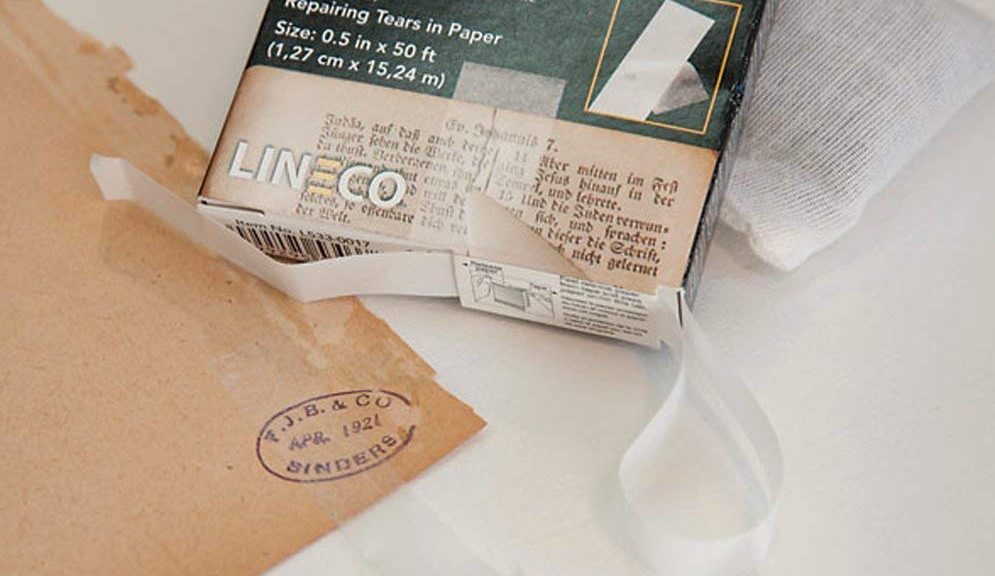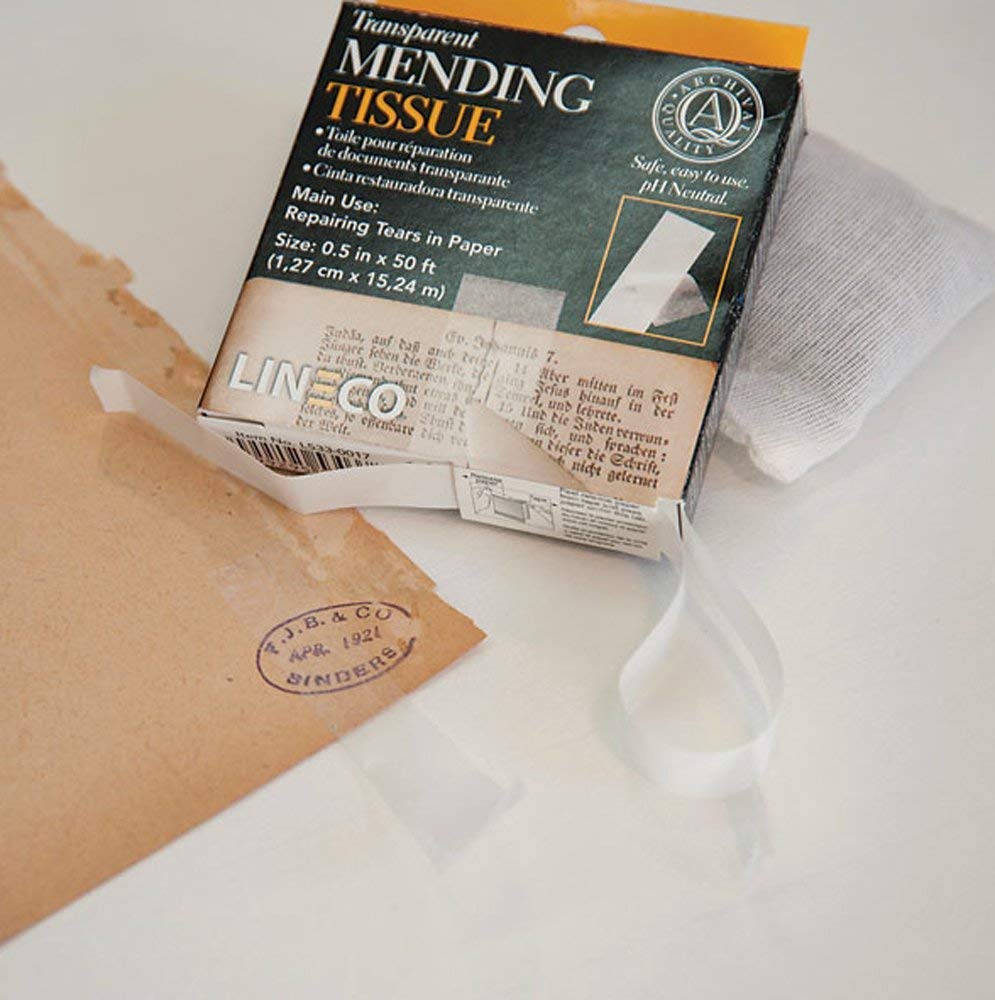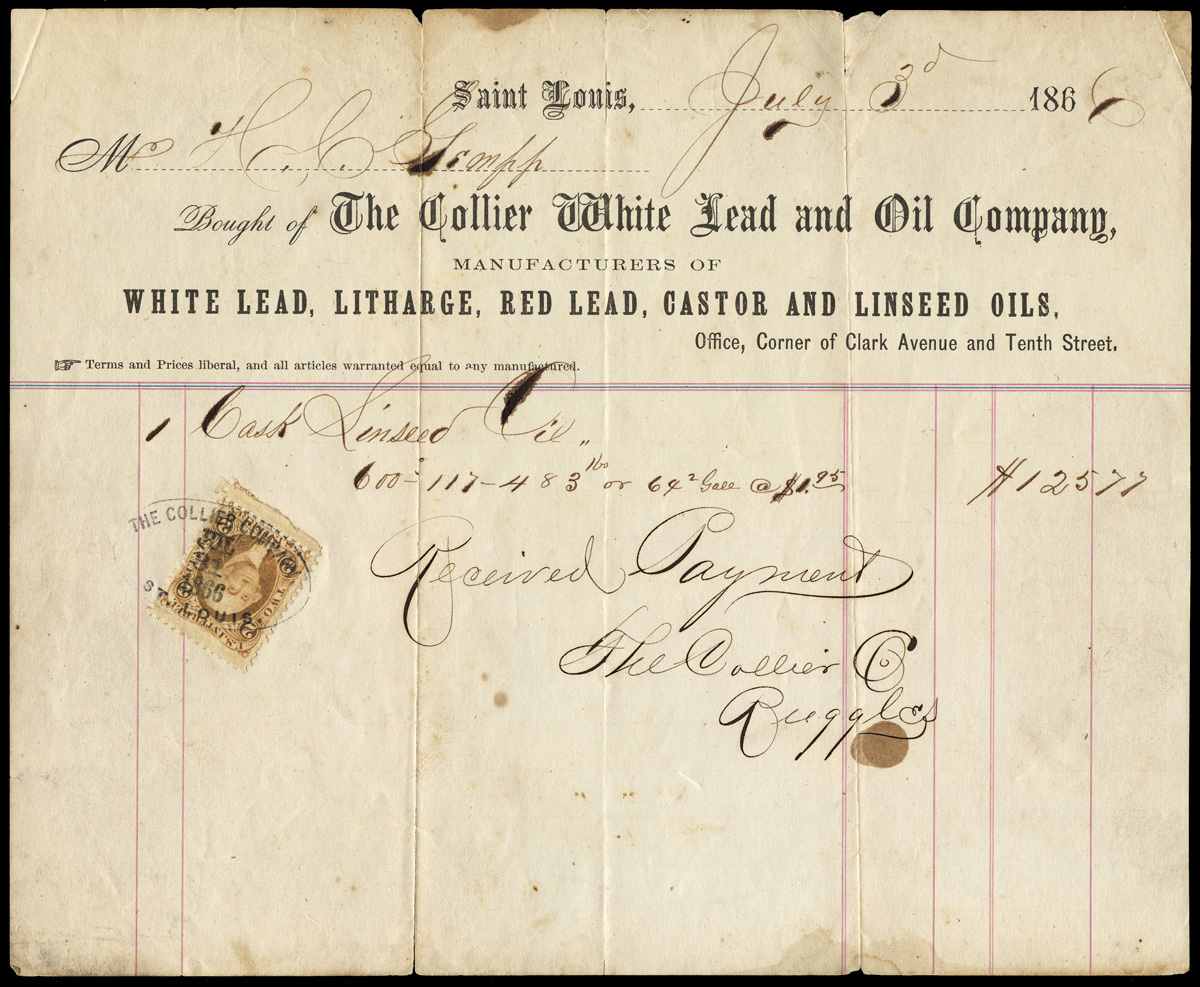
Savior for documents/stock certs/etc.: archival mending tissue
If you collect revenue documents, stock certificates, etc., especially 100-200 years old, you’ll frequently encounter documents that have become brittle and split. Additionally, there are frequently issues with cut and punch cancels that make the documents susceptible to further damage in transport and handling.
You want to stabilize the document while at the same time you do not want to impact the visual presentation or introduce acid-based repair materials (tape).
I swear by Lineco’s “Archival Mending Tissue”. It has helped me save and reconstruct countless documents that have been in less than optimal condition. It’s pH neutral and will not stain/discolor over time.
Mending Tape Listing on Amazon
The tape is very delicate, the name “tissue” is accurate with respect to appearance and consistency, but it is very strong.
You don’t want to try and apply long lengths of the tissue, instead use multiple smaller strips; they’re much easier to work with.
Most revenue documents have a particular side (or face) that you want to present or image, so you’ll want to put the tissue on the back (the nonfacing side). That seems like a common sense notion, but important to reinforce.
As examples, I used it on the two documents below. On the first, the document was completely split into two pieces, so I used the mending tissue to put it back together. On the second, I used it to “fill” portions of the cut and pierce cancels back into position; you can frequently “restore” pierce cancels, as the cancel, while making a hole in the document usually didn’t remove paper but pushed it to the side. If you’re careful, you can unfold the edges of the cancel and restore the appearance of the document.
Follow-up:
I have not tried removing any from my documents.
It may seem a bit expensive at $8-10 per roll, but a 50-foot roll goes a LONG way. I’m just now getting to the end of my first roll that I bought about 3 years ago.
For those considering using it on covers, keep in mind that while it does not have a glossy/shiny surface like many standard tapes would, and disappears fairly well, I would not call it “invisible”, hence my earlier recommendation of using it on the back side of documents. I’m not sure that cover collectors would deem it as perfect a solution as document collectors might.
Below are images of the back of the second document I show above, so you can see the mending tissue itself. On the first image it really isn’t noticible. On the second, a 1600dpi zoomed in portion, you can see it, although it does a good job of disappearing. You can still see the document surface details under the tissue. The bioggest impact is the slight obscuring of the manuscript ink (compare the color of the portion under the tape with that not under the tape).




